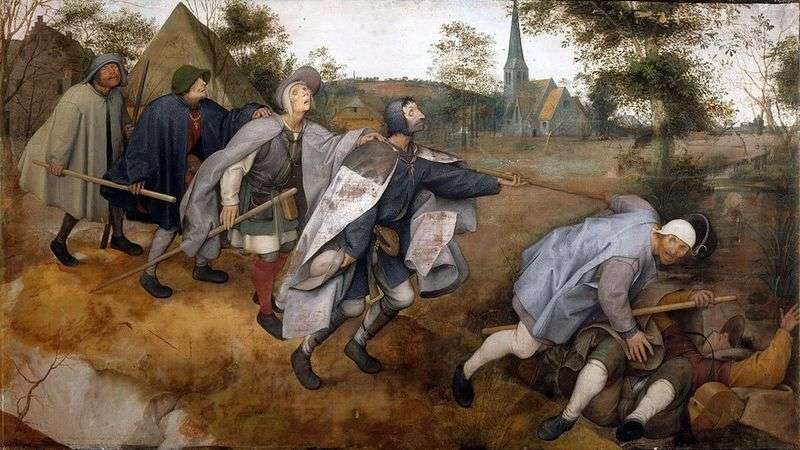
The plot of the picture “The Parable of the Blind” or “The Blind” is related to the evangelical parable of an unreasonable blind man who undertook to be a guide to his fellow-sufferers. “Can a blind man lead a blind man?” Says the Gospel of Matthew. “Leave them, they are the blind leaders of the blind, and if the blind lead the blind, they both will fall into the pit.” For several centuries this parable served as an instructive example of the unreasonable behavior of people under the power of spiritual blindness.
Christian motifs in Brueghel’s fantastically intertwined with realistic symbolism. Six unfortunate people wander along the uneven ground, as if rising heavens, to hold each other, but here comes the misfortune – the blind guide could not grope for his staff where the end of the hillock ends. Together with his belongings, he falls into the river and pulls behind him those going behind. Bruegel the Elder consistently, like in slow motion, depicted all the phases of the fall, which along the chain is transmitted from the first blind man to those who follow and inevitably find themselves in the river.
It is curious that the artist showed various diseases of blindness with such precision that modern oculists were able to diagnose the characters in the picture. Thus, the third blind man suffers from corneal leukemia, and the second has his eyes broken. Bruegel used an unusual technique of painting called “quartz”, he probably borrowed it from his mother-in-law – miniature painter Makin Verholz. A strong dilution of the temperature when applied to the canvas imitates expensive images on the carpets. The Artist’s ruthless curiosity towards ugly mutilated people was in the spirit of that time. Ugliness was considered comical and invariably confused the audience. The painter himself does not have a single pity for his characters. Through physical ugliness, Bruegel conveys the spiritual blindness of the puppet people, who are moving toward a meeting of an unknown, but inevitable and terrible death.
Peter Bruegel and his contemporaries got a difficult fate. Religious intolerance, the gallows and fires of the Inquisition were common. In 1567, a year before the painting “Parable of the Blind”, the Spanish conquerors established the most violent terror in the Netherlands. More than 8 thousand people were executed. But in response to the heroic resistance of the people, a higher society, like a blind guide, preferred to join the conquerors. Some researchers suggest that it was disappointment in life and in people that prompted Peter to create the picture “Blind.”
The ugliness and anger of the characters are combined with the majestic beauty of nature. The artist painted a quiet and uninhabited landscape. hilly plain, rustic village houses and a small cozy temple. This small village church still stands in the vicinity of Brussels. The tranquility and freshness of the Bruegel landscape show the eternity of the world. It looks even a river, where it is destined to be drowned by all six. Against the background of the quiet beauty of the world, the figures of the blind are even more repulsive and scary. Showing the contrast between the serene landscape and the ugliness of stupid angry people, the artist sees spiritual beauty only in nature. The motif of the evangelical parable about the blind Peter was already used in the composition of his painting “Flemish proverbs” with a philosophical annotation.
During the social upheavals that prevailed in the Netherlands in the 16th century, the paintings of the moralist Peter Brueghel were no less important than humanistic literary works. The great artist laid the foundation for the technique of landscape that is used today, and his painting The Parable of the Blind, written a year before his death, warns humanity against entering the wrong path – the road in the darkness of spiritual doubts.
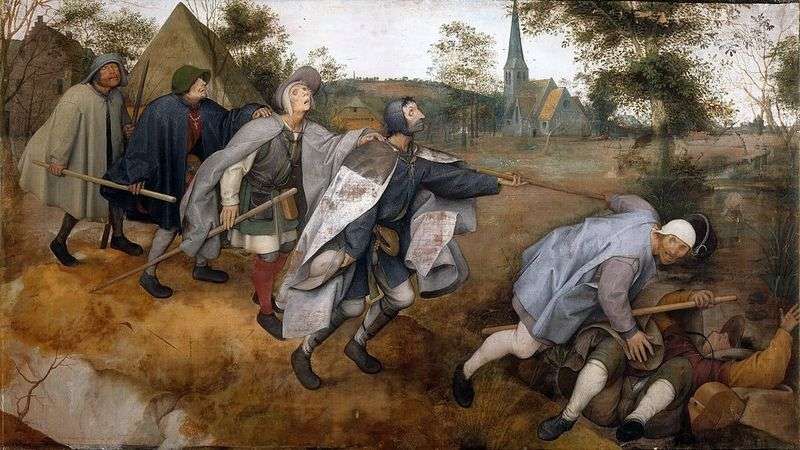 The Blind by Peter Brueghel
The Blind by Peter Brueghel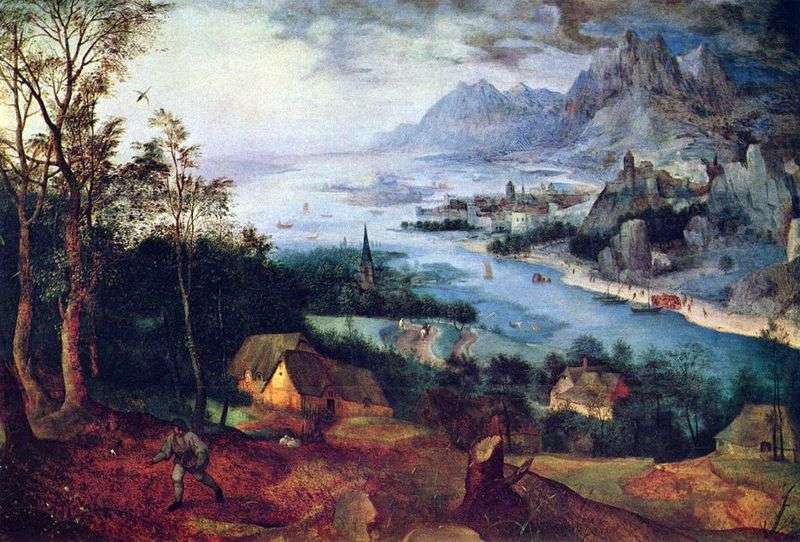 The Parable of the Sower by Peter Brueghel
The Parable of the Sower by Peter Brueghel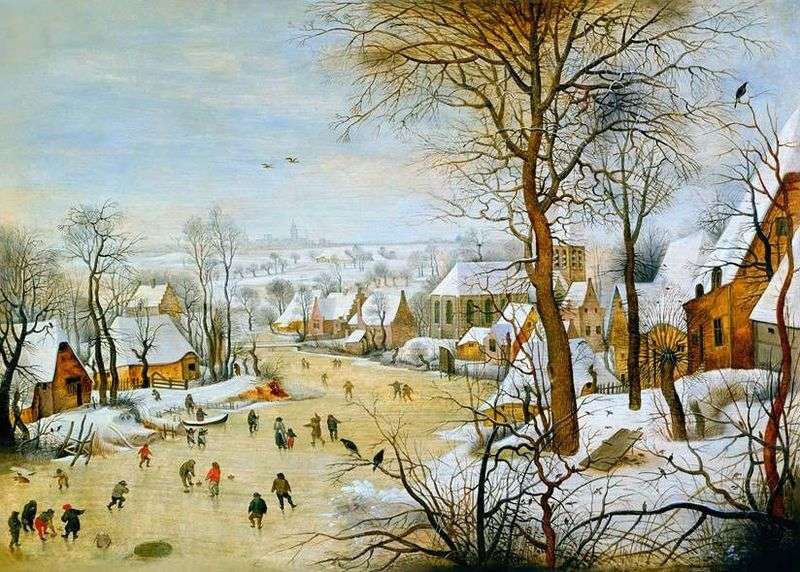 The Bird Trap by Peter Brueghel
The Bird Trap by Peter Brueghel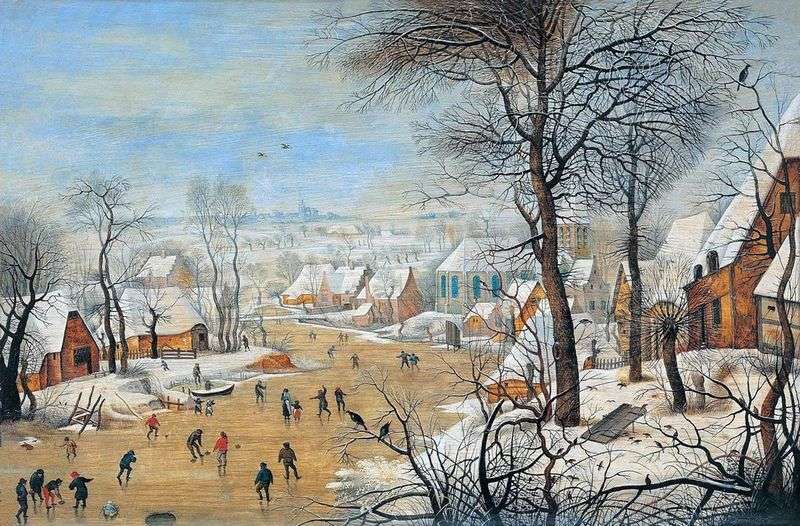 Landscape with skaters and a trap for birds by Peter Brueghel
Landscape with skaters and a trap for birds by Peter Brueghel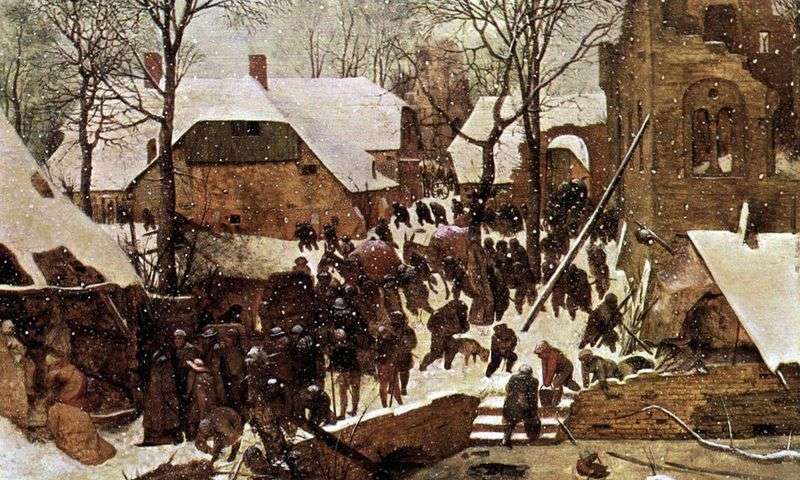 The Adoration of the Magi in the Winter Landscape by Peter Brueghel
The Adoration of the Magi in the Winter Landscape by Peter Brueghel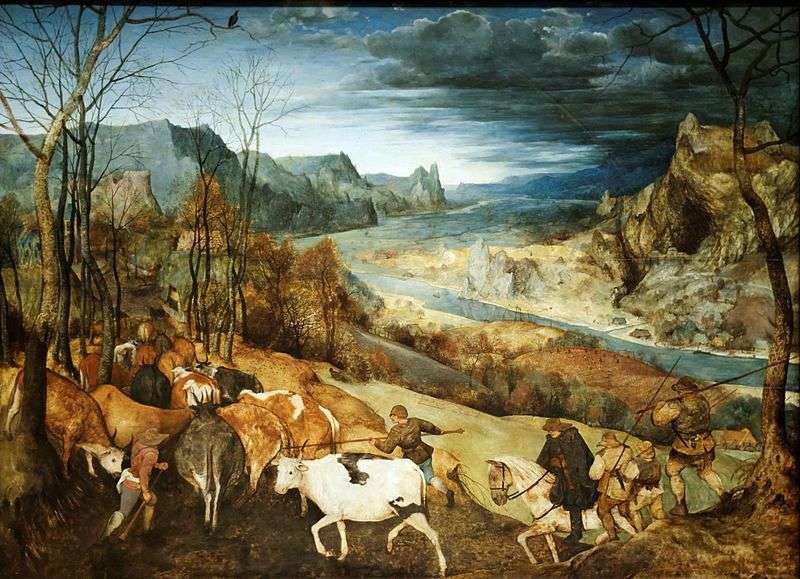 Return of the herd by Peter Brueghel
Return of the herd by Peter Brueghel The Tower of Babel by Peter Brueghel
The Tower of Babel by Peter Brueghel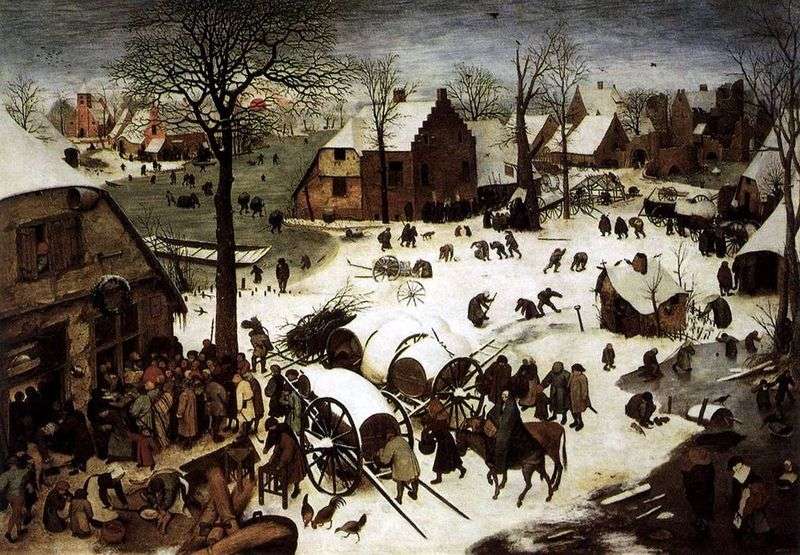 Census in Bethlehem by Peter Brueghel
Census in Bethlehem by Peter Brueghel